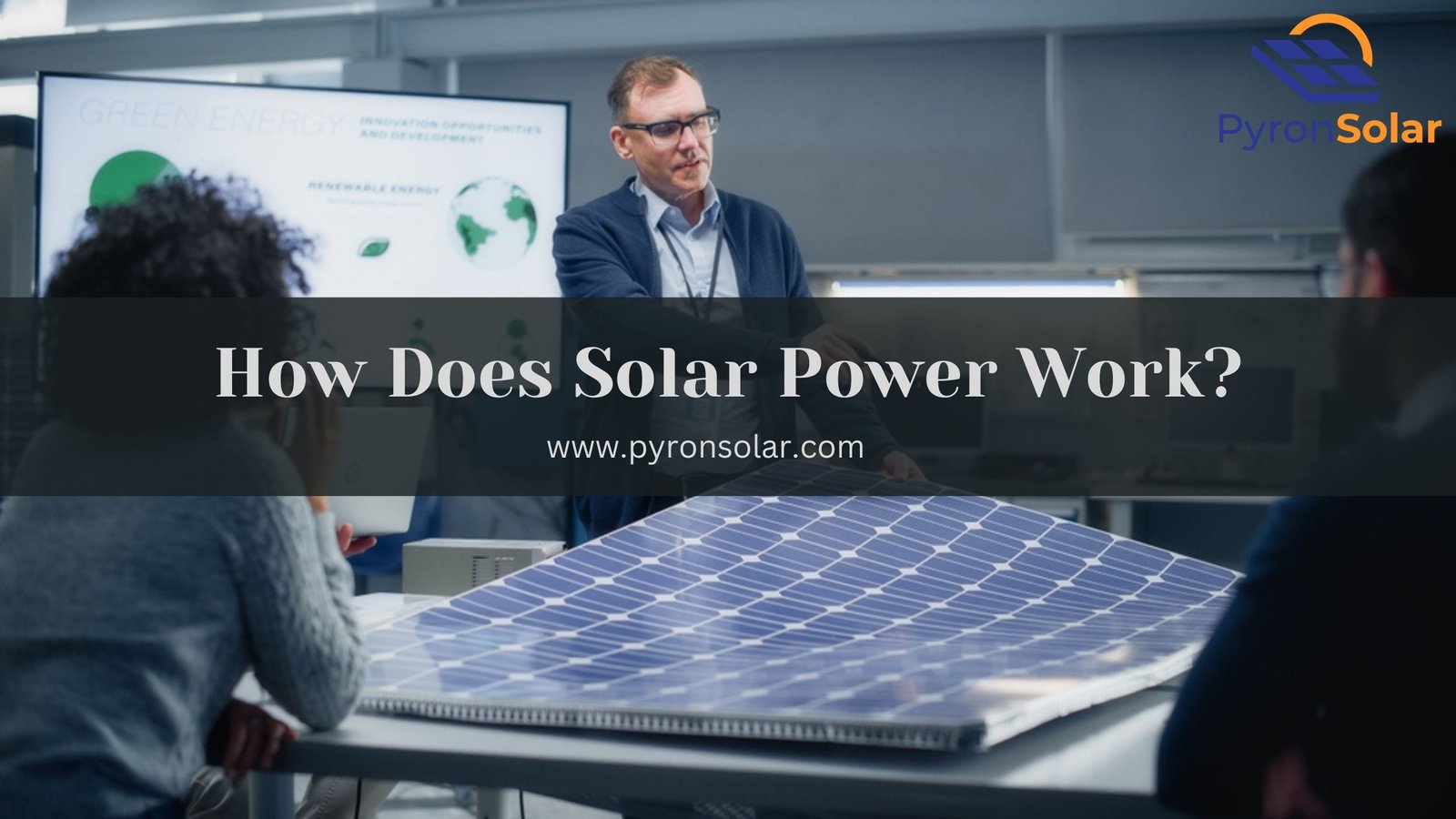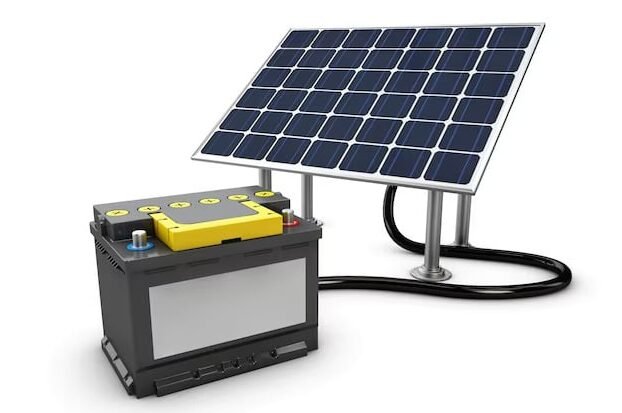Solar power works by converting sunlight into electricity through the use of photovoltaic cells in solar panels. When sunlight hits these cells, it generates an electric current by exciting electrons. This electricity can then be used to power homes, businesses, and other applications, providing a clean and renewable energy source. Solar power systems often include inverters to convert the generated direct current (DC) into alternating current (AC) for use in standard electrical grids.
The idea of Solar Power Technologies was derived from the 7th century BC when humans used magnifying glass to spark fire. Similarly, energy is obtained from sunlight using the PV (Photovoltaic) Panels made of semiconductor materials like silicon. The sunlight energy is converted to electricity and the smartest discovery about this is we could store the energy in batteries and generate electricity whenever required.

It is very important to know how solar power works and how solar panels (PV panels) generate electricity from sunlight. In this article, you will understand, explore, and walk through various necessary concepts such as the different types of solar power systems and their components, the electric controllers. Also, about buying solar systems, claiming federal tax benefits, and the regulations of SETO (Department of Solar Energy Technologies Office).
How Does Solar Power Work?
Solar panels consist of numerous small units known as photovoltaic cells. Two layers of semiconductor material (usually silicon) are used in each photovoltaic cell. When this material is exposed to sunlight it generates voltage or electric current and this is known as the photovoltaic effect.
The actual part comes when the sunlight radiates on the solar panel, silicon atoms soak the photons present in light, and energy makes electrons move away from their atoms and create electricity.
Solar power works through a straightforward process. Here, I have mentioned all processes in points to understand easily.
1. Sunlight hits solar panels: Solar panels, composed of photovoltaic (PV) cells, capture sunlight. These cells are typically made from silicon, which is a semiconductor material.
2. Photovoltaic cells convert sunlight into direct current (DC) electricity: When sunlight strikes the PV cells, it excites electrons, creating an electric current. This process is known as the photovoltaic effect.
3. An inverter converts the DC electricity into alternating current (AC): Since most home appliances and the electrical grid use AC electricity, the DC electricity generated by the solar panels is converted into AC by an inverter.
4. The electricity is then used to power your home: The converted AC electricity can be used immediately to power household appliances and lights.
5. Excess electricity can be fed back into the grid: If the solar panels generate more electricity than is needed, the surplus can be sent back to the electrical grid, often earning the homeowner credits or payments through a process called net metering.
6. Battery storage for later use: Some solar power systems include battery storage to save excess electricity for use during cloudy days or at night, ensuring a continuous power supply.
This process provides a clean, renewable energy source that reduces reliance on fossil fuels and lowers electricity bills. You can also learn about which energy source is better solar energy or fossil fuels.
Now let’s see what are solar power systems, their types, and their components.
There are 3 categories of Solar Power Systems:-
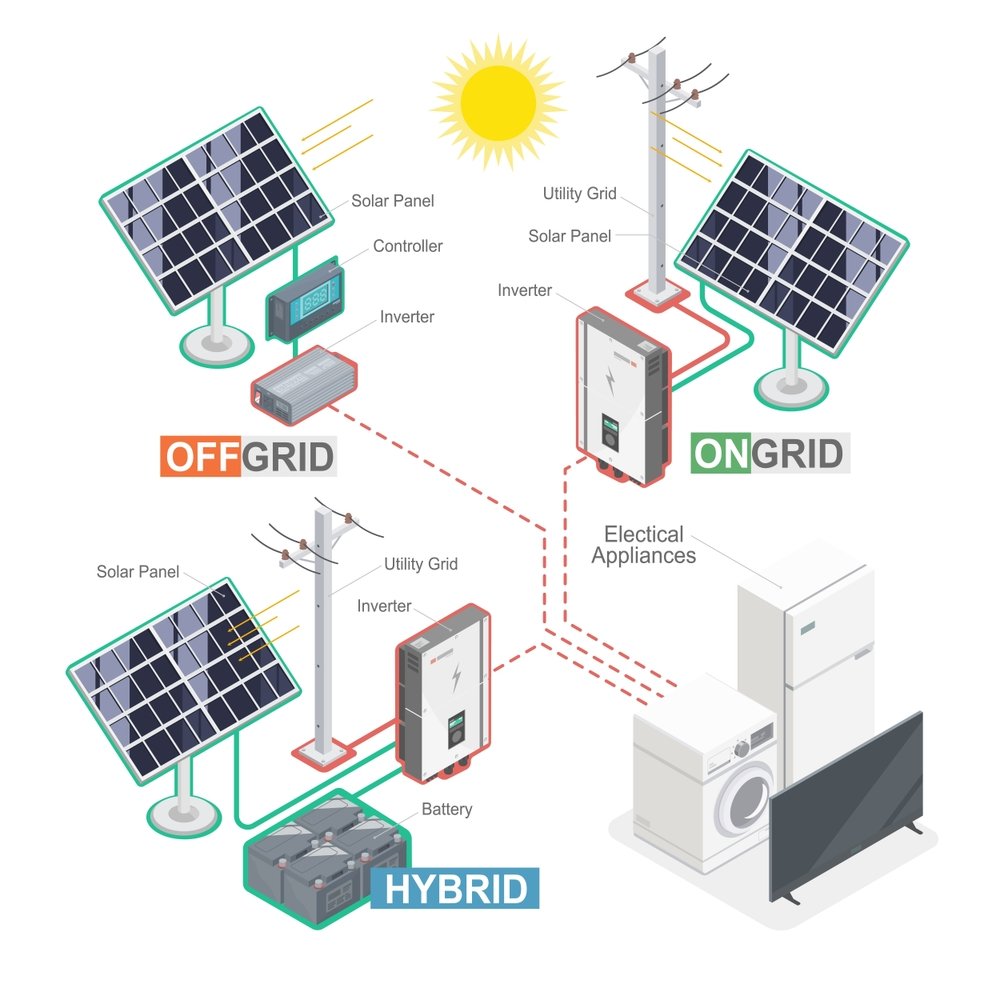
1. On-Grid
The Power System connected to an Electrical Grid is known as the On-Grid or the Grid-Tied solar power system. It allows us to use electricity when solar panels don’t generate the required power. So far it is the most commonly found and used type of solar system.
2. Off-Grid
Off-grid Systems has no connection to the Electrical Grid but one of its biggest advantages is playing a major role in remote locations where there is no access to the grid. However, it would require a battery to store electricity so that it can later be used during the night or in harsh climatic conditions.
3. Hybrid
This Power System is a combination of On-Grid and Off-Grid. It is connectable to the electrical grid and also has batteries to store electricity. The best thing about a Hybrid solar system is that it can provide power backup when required and also helps subside the electricity bill.
People oftentimes get complicated to choose between these 3 types of solar systems, but it depends upon the individual’s needs and requirements.
Firstly understanding where to use is very important, for instance, if a person has access to an electrical grid but wants to reduce the electricity bill, then an on-grid/grid-tied solar system would work best for them. But, when a person doesn’t have access to the electrical grid and would want to create a power backup, then an off-grid or hybrid solar system is the best option.
Here is a table to help you clearly understand the primary differences between the 3 types of solar power systems:
| Type of Solar System | Connected to Grid | Battery Backup |
| On-Grid | Yes | No (Optional) |
| Off-Grid | No | Yes |
| Hybrid | Yes | Yes |
Components of Solar Power Systems:-
1. Solar Panels
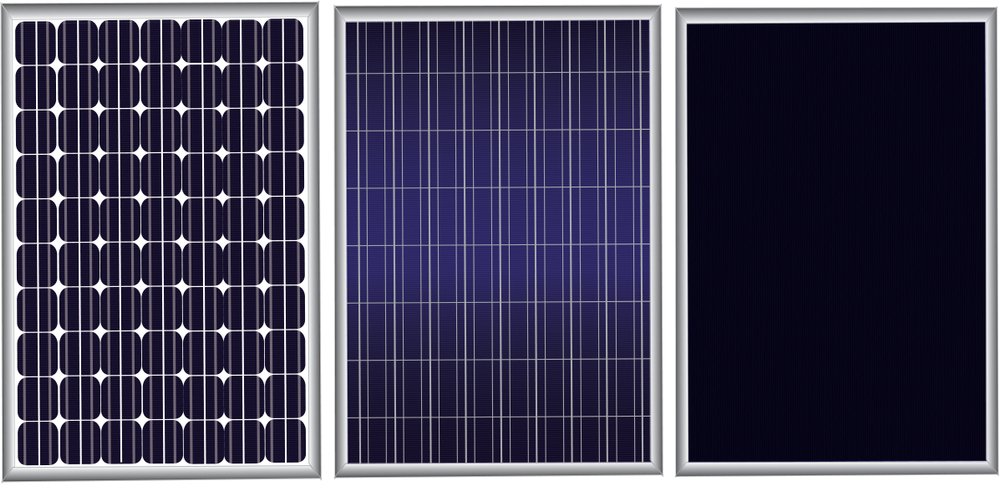
A solar panel is a device that converts sunlight into electricity using photovoltaic cells.When solar panels are exposed to sunlight, they convert solar energy into electricity through a process known as the photovoltaic effect.
This occurs when photons from light are absorbed by the silicon atoms in the panels, which are made of semiconductor material. This absorption generates an electric field, causing electrons to flow in one direction, which creates the electric current. If you want to know more about how solar panels work, you can learn in detail.
2. Solar Inverters
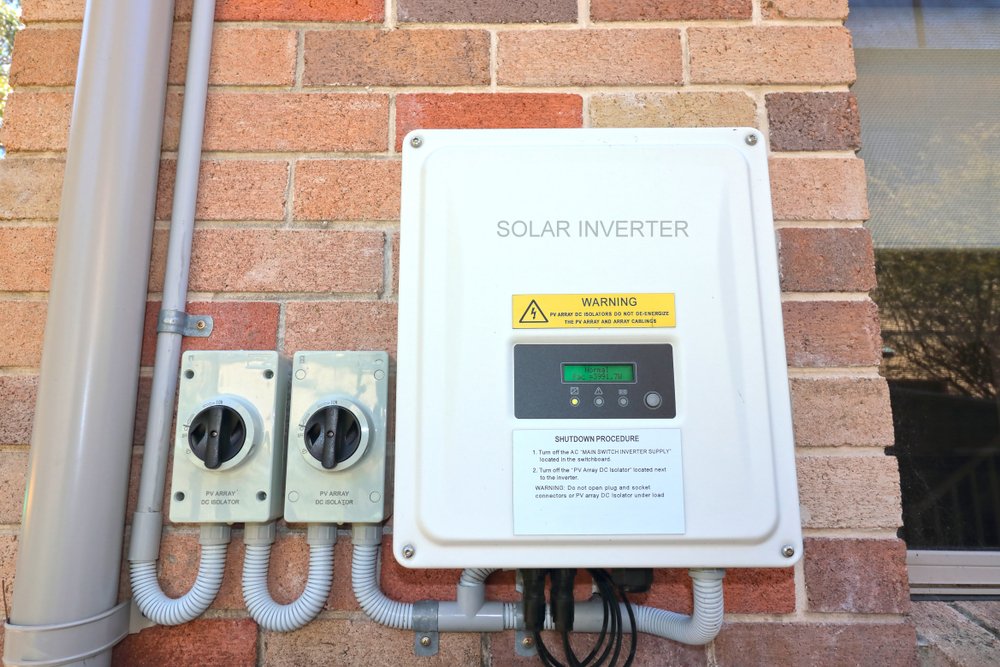
Inverters are available in various sizes with different specifications. Few are designed to be used with off-grid solar systems, while the others are to be used with the on-grid solar system.
Generally, homes or business places use alternating current (AC), and solar inverters are used to convert AC into direct current (DC).
It is recommended to use an off-grid solar inverter when you opt for a battery backup system. Also, it is better than an on-grid solar inverter, in handling high surges while using electronic appliances like air conditioners and refrigerators.
When you think of having a connection to the electrical grid, it is best to use on-grid inverters as they are very efficient in converting DC power to AC. Despite that, it can handle only low surges and is not as capable as an off-grid inverter to handle high surges.
3. Solar Batteries
The batteries help store electricity obtained from sunlight. It could be very helpful during the night or when the climate is cloudy. Solar batteries are made up of lithium-ion, lead acid, or nickel-cadmium.
The most commonly used type of solar batteries are the Lead-acid batteries. Because of the affordable cost and longer lifespan, it becomes the most chosen one to be used. Also, these are very heavy batteries.
Lithium-ion batteries are lighter in weight and more efficient but heavier in the cost factor as it is costlier than lead-acid batteries. These batteries have a longer lifespan compared to the lead acid batteries.
And comes the most expensive type of solar battery i.e the Nickel-cadmium battery. This is the most efficient type of solar battery. Also, this is the lightest battery with the longest lifespan compared to any other type of solar battery.
4. Solar Charge Controllers
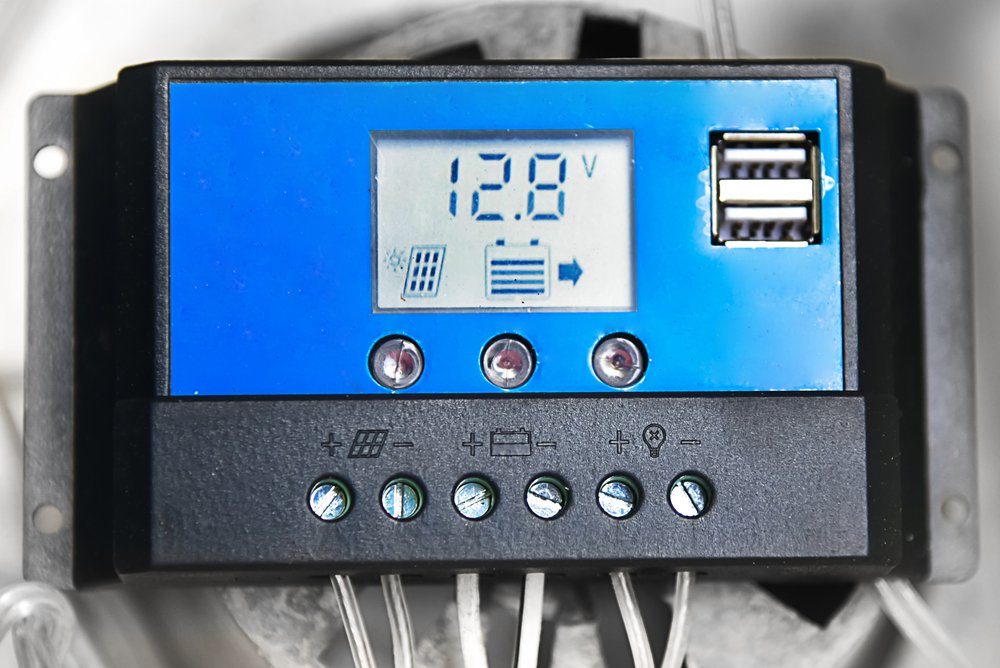
The Solar charge controllers are used to control the discharge of electricity between the solar panels, batteries, and inverter. It acts as a shield for the batteries by protecting them from overcharging and over-discharging. Electric controllers secure a steady electricity supply from solar panels to the inverter.
There are 2 types of Electric controllers:
- PWM controllers are the easiest and most affordable type of electric controller. They work by turning the current on and off at a breakneck speed. In this way, it lowers the amount of electricity that is lost. Also, it decreases the efficiency of the solar system.
- MPPT controllers are much costlier than PWM controllers but they are highly efficient. They measure the greatest level of power point in the solar panels. In this way, they extract the highest amount of power from the solar panels, though they are not working at extreme efficiency. In this way, they extract the highest amount of power from the solar panels, though they are not working at extreme efficiency.
Difference Between Solar Energy and Solar Power
Generally, people think solar power and solar energy are the same, but there are some differences you should know.
| Characteristics |
Solar Energy |
Solar Power |
| Definition | Energy that is obtained from the sun | Conversion of solar energy into electricity |
| Units | Joules (J) | Watts (W), kilowatt-hours (kWh) |
| Applications | Provides hot water, Generates electricity, Powers up vehicles | To Generate electricity usable in homes, businesses, and industries |
| Examples | Solar panels, solar thermal collectors, solar water heaters | Photovoltaic power plants, concentrated solar power plants |
- The sun radiates 173 quadrillion watts of energy every second.
- Just 30 minutes of sunlight radiating on Earth equals the entire world’s power consumption for 365 days.
- Energy from Sunlight can be converted into electricity at 26% efficiency.
- 250-300 watts of electricity can be generated by a standard solar panel under flawless conditions.
Frequently Asked Questions
- What is the role of inverters in solar power systems?
Solar inverters are vital components of solar power systems used to convert DC (direct current) to AC (alternating current). Homes and businesses use AC electricity. These inverters regulate the voltage and frequency. Also, it is compatible with an electrical grid. There are few inverters that allow the owners of the house to monitor solar energy.
- How is excess solar power stored for later use?
Excess solar power can be easily stored and used later whenever required. Solar battery is generally a rechargeable battery that is capable enough of storing the obtained energy from sunlight through solar panels. Later this energy is converted into electricity and used at night times or in cloudy climatic conditions.
- Does the government provide any incentives for installing solar power systems?
Yes, there are Government incentives available for installing solar power systems through the HUD (Department of Housing and Urban Development). This provokes people to opt for renewable energy as recommended by the EPA (Environmental Protection Agency).
Ray is an avid reader and writer with over 25 years of experience serving various domestic and multinational private and public energy companies in the USA.

